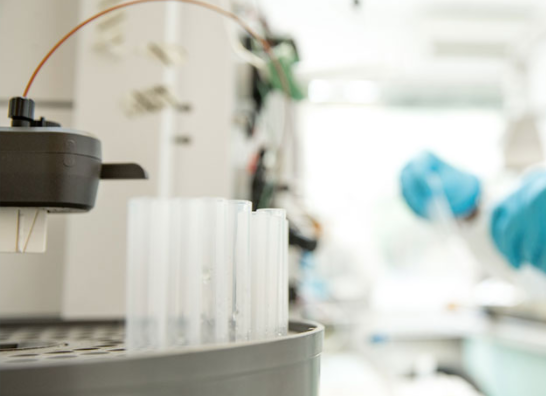The extraction of membrane proteins from biological membranes is usually accomplished with the use of detergents. While some general rules can be surmised, the choice of detergent best suited for the purification of a given membrane protein needs to be determined experimentally. Moreover, a detergent that stabilizes a membrane protein well is not necessarily compatible with downstream experiments involving the particular membrane protein. This article discusses the compatibility of detergents with applications relevant to membrane protein biochemistry and purification. Detergents should be stored in a cold, dry, and dark place; many detergents are prone to oxidation and to partial hydrolysis, and most are hygroscopic.

Detergent Solutions
Detergent solutions should be stored at −20°C. Additionally, detergents of poor quality can ruin experiments. Polyoxyethylene-based detergents can contain peroxides that are known to interfere with protein activity. Free long-chain alcohols (from the synthesis procedure) are a common impurity in detergents that leads to turbid detergent solutions; the same is true for residual organic solvents. For chiral detergents, small amounts of the “wrong” stereoisomers can significantly change the properties of the detergent solution compared to the pure substance. Quality can also strongly depend on the synthesis lot (especially for detergents like digitonin that are extracted from natural sources). Generally, detergents are soluble in water to high concentrations; the solubility of SDS in water is 25% (w/v), for example. However, many buffer additives have drastic effects on the solubility, critical micelle concentration, cloud point, and aggregation number of a detergent. These additives can induce phase separation or even the formation of liquid crystalline phases at ambient temperature. High salt concentrations strongly decrease the critical micelle concentration of ionic detergents; for example, the critical micelle concentration of SDS is reduced 16-fold from 8.1 to 0.5 mM when the NaCl concentration is increased from 0 to 500 mM. Polymers like PEG or dextran, but also salts, glycerol, and sugars, modify the cloud point of detergents and can lead to unwanted phase separation. The strength of these effects increases with increasing additive concentration and depends on the type of detergent used. On the other hand, when working with low detergent concentrations close to, but still above, the critical micelle concentration, a buffer additive might increase the critical micelle concentration such that membrane proteins will precipitate. Proteins are typically quantified using established colorimetric assays or, for pure proteins with a known extinction coefficient, by UV absorbance measurements. Detergents that absorb UV light, ex. Triton, are not compatible with the latter method. The compatible detergent concentrations vary extremely in some cases; some suppliers have found ways to improve detergent compatibility significantly. As a general rule, measurements of protein standards and baseline measurements should always be done with the same detergent buffer that is used for the sample. The BCA assay is compatible with a broad range of detergents at high concentrations, while the Bradford and Lowry assays are only compatible with some detergents. Detergents typically used for membrane protein applications do not absorb light in the visible range (they are not colored), but, as mentioned above, detergents that strongly absorb UV light are incompatible with optical measurements in that wavelength range. This applies not only to UV-VIS measurements, but also to circular dichroism spectroscopy, and to a lesser extent, fluorescence spectroscopy, where signals might be quenched by UV-absorbing detergents. Due to the micellar nature of detergent solutions, they scatter light, which leads to significant background signals in static or dynamic light scattering measurements of proteins or protein complexes. As with all other organic molecules, detergents interfere with measurements in the infrared spectrum; precise background measurements are necessary for IR and FTIR spectroscopy of membrane proteins in detergent buffer systems. In rare cases, detergents seem to form micellar structures that display a signal in circular dichroism spectroscopy that is not based on UV absorption.
ARVYS Proteins, Inc. is a leader in the space of Antibody Development & Production. From the generation of antigen to characterization of antibodies ARVYS Proteins provides protein expression & purification services for critical projects.




